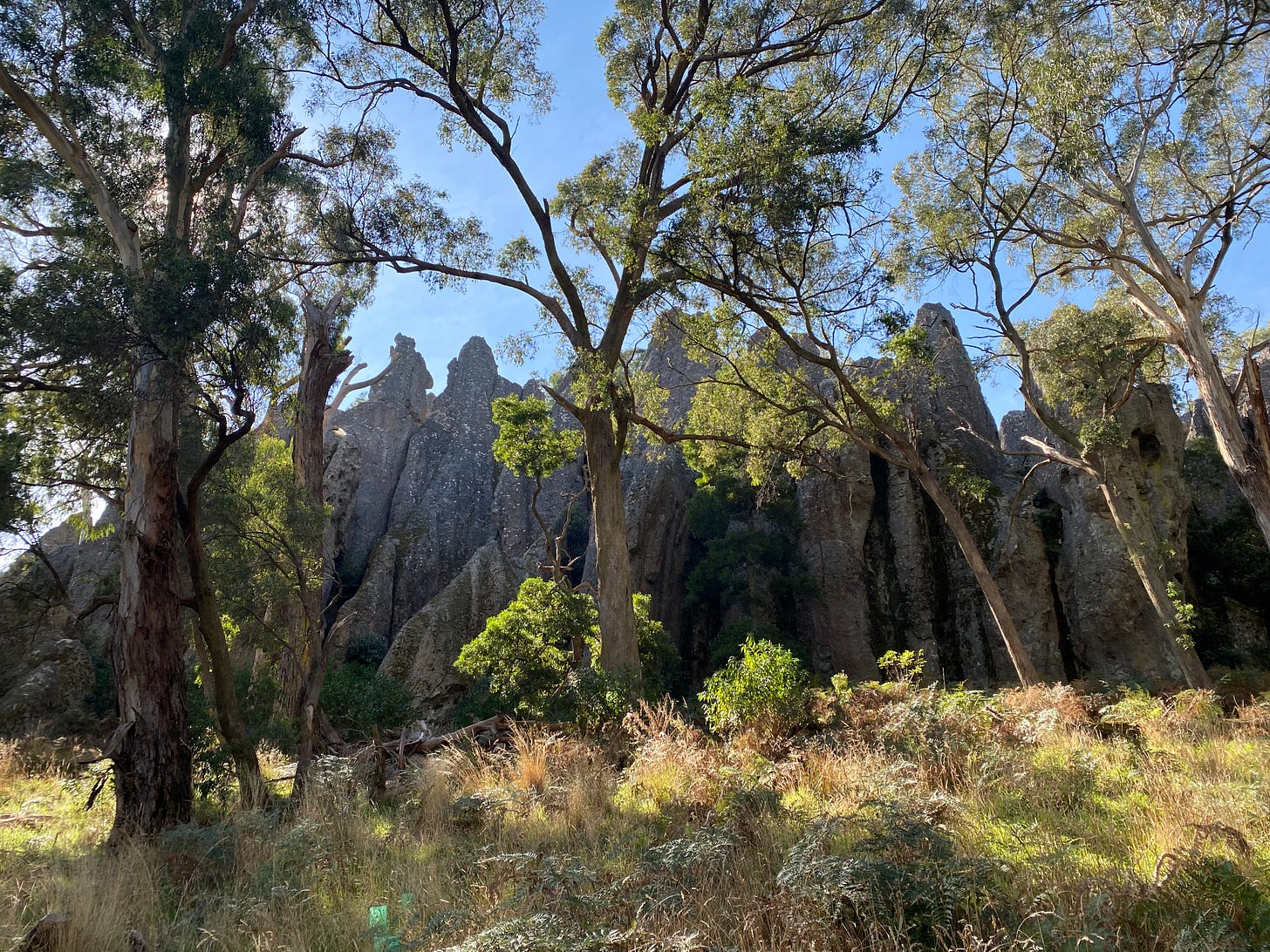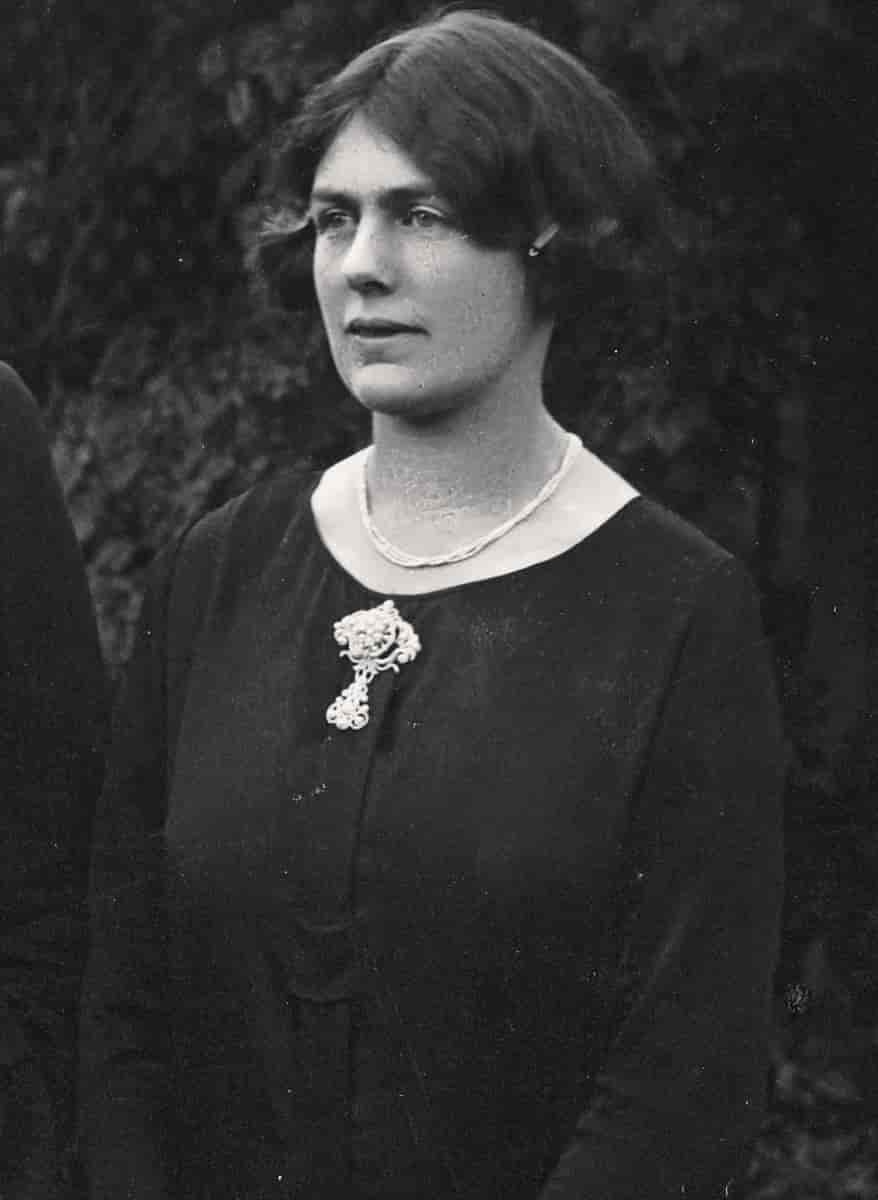Welcome to A Narrative of Their Own, where I discuss the work of 20th century women writers and their relevance to contemporary culture.
If you enjoy reading essays on literature as well as monthly reviews, please consider a free or paid subscription.
Every so often, I pick up a book that I can’t quite believe I haven’t already read before: does this ever happen to you?
Some books just appear to have a ‘Classic’ status, are often mentioned in popular culture, and are just kind of…there. Always just hanging around the periphery of your consciousness.
Picnic at Hanging Rock was one of those books for me. Often referenced in TV shows I’d seen, and a book I kind of thought I’d already read years ago but couldn’t quite remember. Often, I think these sorts of books feel familiar because of the references made to them; you feel as though you already know the basics of the story. The Graduate was one such book, which again, I picked up a couple of years ago feeling that I already knew.
Anyway, all this to say that I definitely hadn’t read Joan Lindsay’s classic before picking it up a while ago, and I thoroughly enjoyed it! It felt like such a refreshing, contemporary book; wholly original, although I definitely picked up Muriel Spark The Prime of Miss Jean Brodie vibes from the storytelling (Lindsay’s book appeared in 1967, whereas Spark’s immortalized school teacher appeared earlier, in 1961.) It has also been remarked on as ‘“proto-Virgin Suicides”, dreamy and haunting, animated by a sense of slightly sickening erotic mystery,’ by Jia Tolentino, referencing Jeffery Eugenides’ The Virgin Suicides, and again, I can get on board with this similarity.
The novel is set in the Australian countryside, where a party of schoolgirls are taken from a girls’ boarding school on a beautiful summer’s day for a picnic to Hanging Rock. Whilst on the picnic, however, three girls go missing. The rest of the novel then explores the reaction and aftermath of the disappearances and the search party sent out to find the girls. The harsh but beautiful Australian countryside provides a backdrop to the story, and adds to the air of strangeness, mystery, and remoteness of the book.
The setting of the novel has been cited as symbolic to the story as a whole. Hanging Rock is a volcanic formation in Victoria, Australia, which, for tens of thousands of years, acted as a sacred meeting place for several Aboriginal tribes. An enormous and remote area, it remains a wild and untamed place. For reasons related to Lindsay’s choice of setting, the book has often been linked to a comment on British colonialism. Some critics have cited that Lindsay uses the setting to introduce a dangerous, imposing element to threaten the supposed community of the school, which perhaps represents the colonists’ attempts to repress the nature of both the landscape and the original inhabitants.
Further links can be made to Lindsay’s clever use of repression in the schoolgirls themselves. Her text often appears to imply that repression is associated with colonialism; the impulse to tame or control an area, a group of people, and even the young girls of the Appleyard college which is demonstrated through the dominance of the headmistress, Mrs Appleyard, and the ways in which the girls are watched against any risk of danger. The schoolgirls must wear their gloves, hats, and corsets at all times, even in the scorching heat of the picnic. They are ‘punished’ for slumping by being strapped to posture-correcting boards and their every behaviour is monitored and controlled, further suggesting a link to colonial rule. As well as managing their overall safety, this is done with an air of maintaining a suitable aesthetic and behaviour for young ladies. Other themes explored well in the text are wealth and class.
Lindsay’s narrative works around the central themes of nature, repression, and colonialism to create a sometimes stifling sense of mystery, fear, and violence. The young white girls of the school and their variously burdened schoolmistresses are shown to live within this place of wild and untameable beauty and yet have no real concept of the land in which they are inhabiting. They appear to be both emotionally and physically separate from their surroundings.
On the morning of Saint Valentine’s Day, 1900, the girls of Appleyard College are taken on a picnic to Hanging Rock, a place they are advised against exploring or climbing due to the perceived dangers, though they are not told much of its history or sacred significance. They are accompanied on the trip by two teaching staff, Miss Greta McGraw, the maths teacher, and Mademoiselle Dianne de Poitiers, the French teacher. Both teachers and pupils are described, as are the other school mistresses, in dry, Spark-esque tones by Lindsay.
After lunch, three of the girls - Miranda, Irma, and Marion - gain permission from Mademoiselle to walk to the rock. We are told (again, similar echoes to Brodie here in her description of the ‘attributes’ of each girl), that Miranda is the beautiful one, Marion the brainy one, and Irma the wealthy girl. A fourth girl, Edith, begs to accompany them, and Miranda allows her to come, despite her being unpopular (I don’t want to belabour the point, but once again, this is very much in line with the ‘Brodie Set’ of Spark’s novel and the inclusion/exclusion of the unpopular girl, Joyce.)
On their way to the rock, they see more picnickers - the wealthy Colonel Fitzhubert and his wife, their nephew Michael (Mike), and their coachman. Mike notices the beautiful Miranda as she jumps the creek to reach the rock.
On arrival, Irma suggests they climb the rock to get a better look at their classmates, which they do, whilst Edith, fearing the climb, asks if they can return to the others. The girls appear in a trance, however, and ignore her requests, continuing to climb higher. Eventually, Edith leaves them in fear and returns to the picnic.
When they do not return to the picnic, their bodies appearing to have completely disappeared from the rock and surrounding area, the party must return to the school without them. Headmistress Miss Appleyard has been pacing since their expected return time of 8 pm; they eventually arrive back at school at 10 pm, with Mademoiselle informing her that something terrible has happened, before promptly fainting.
Cleverly, Lindsay prefaces the book with a note indicating the legitimacy of the story, hinting that it is based on fact. It is actually a work of complete fiction, but the plot reads with a supernatural element, and the ending further adds to this overall feel. To add to this authenticity, included in the text is a clipping of the report given by Mr Hussey, the cab driver of the trip, to the head of police, Constable Bumpher. It states that Edith came screaming down the rock, and it was at that point that they noticed that Miss McGraw, the maths teacher, was also missing.
The Constable enlists the help of the Fitzhuberts’, several bloodhounds, and an Aboriginal tracker, but no trace of the girls or their teacher can be found. On returning to the rock to try to jog her memory, Edith states that she remembers seeing Miss McGraw passing her on her way down the rock, dressed only in her underwear.
In the days following the girls’ disappearance, the town imagines the broken and bloodied bodies of the innocent young girls, feeding on the mystery of the strange occurrence at the rock. Mike Fitzhubert remains convinced that the girls are still alive and goes out in search of them again, alone, and ends up being found unconscious. Nearby, an unconscious Irma is also found, alive and unharmed. Unfortunately, on regaining consciousness, neither Mike or Irma remember what happened to them on the rock.
Again, similar to Spark’s books, other strange occurrences befall the characters of the school, seemingly unrelated to the original mystery. After a fully recovered Irma returns to school, the other girls exhibit a form of hysteria. Miss Dora Lumley, another school teacher, decides to leave, fearing the strange goings-on at the school, whereupon the hotel she chooses to stay at burns to the ground. And towards the end of the story, a mysterious body is discovered in the shrubbery.
Born in 1896 in Melbourne, Australia, into a prominent artistic family, Lindsay attended Clyde Girls Grammar in East St Kilda and later, studied at the Gallery of Victoria Art School in Melbourne. In 1922, she married another artist, Sir Daryl Lindsay, travelling to first Europe and then the USA with him, where he painted and she mostly wrote. Although she also painted throughout her life, exhibiting both watercolour and oil paintings, writing became her main creative occupation.
She knew and loved the Macedon district in which Picnic is set, and claimed to have written the book in just four weeks in the couple’s country home on the Mornington Peninsula, Victoria. She set it around the real-life Hanging Rock as she had been fascinated by it since childhood. She wrote several other novels, plays, and essays, though remains most remembered for Picnic.
The ending of the book is similarly strange to the overall atmosphere of the story. I won’t spoil it for you if you haven’t read it, but let’s just say it isn’t a neatly tied up bow of an ending! Ambiguity and a supernatural, dark mystery lies at the heart of Lindsay’s novel from beginning to end, and it definitely benefits from some close reading around the text for this one.
That said, it is also a slim, easy to read classic that snakes its way to a conclusion. Although it sounds pretty dark (and it certainly holds a deep sense of unease) Lindsay’s prose and characterisation is also very funny at times. Written in an ironic tone, her voice feels fresh and she is exceptional in delivering a matter-of-fact element to her mystery yarn.
Lindsay died in 1984, but her book remains an iconic Australian novel, which was also made into a successful film in 1975 by director Peter Weir, credited with initiating the revival of Australian cinema. A re-printing by Penguin Australia following the success of the film resulted in the sale of over 350,000 copies, making it one of Australia’s bestselling novels.
If you are a fan of the novels of Muriel Spark, particularly Brodie, I would definitely recommend checking this one out if you haven’t already read it. I found a lot of similarities, but that is a definite positive for me, as a Spark fan. It’s also a good choice if you’re wanting to access a fairly short, easy-to-read classic, or explore more antipodean writing. I would also recommend reading around the book if you can, as the critical writing around colonialism in relation to the novel in particular makes for a fascinating study.
Free subscribers receive my weekly researched essays every Sunday, as well as access to community threads.
Paid subscribers also receive access to my monthly reviews and full archives. A paid subscription works out at less than £2 per month for the yearly fee, helping me to research and celebrate the important words of women.
Thank you for your support 🙂








Fascinated by the book and the film when it came out. We watched it again recently and thought it wasn't ageing well...but I think the Muriel Spark analogy is well made.
Crazy: this book is in the post I shared today too!! It’s on my “started reading but haven’t finished yet” list and so I’m bookmarking this to read after I’ve finished it!! It’s so good. The first 30 or so pages are amazing so far!